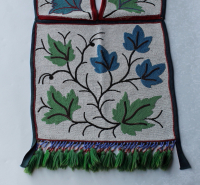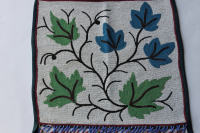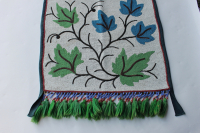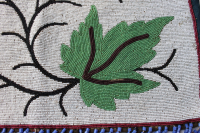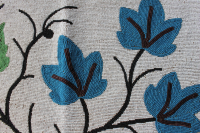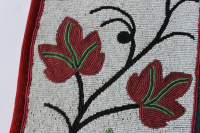Bandolier bag
Bandolier bag
Bandolier bag
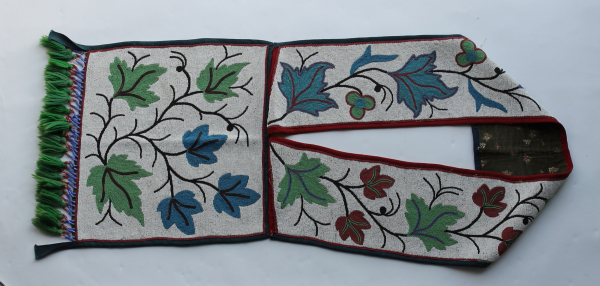

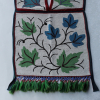
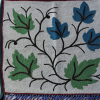
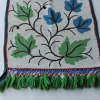
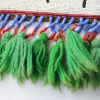
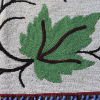
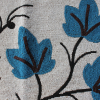
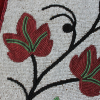
Bandolier with false pouch & two-piece strap, floral beadwork in overlaid spot stitch appliqué beading, loop fringes along bottom edge
Museum Records
Condensed from catalogue records.
Read More About This Relative
Canvas, cotton, seed and tubular beads, wool tape, wool, thread
Rectangular bottom panel with two shoulder strap panels, no pouch, Panels are canvas completely covered with broad floral designs along a triple black stem on a white background, bottom panel has green and blue leaves with brown spines, shoulder panels have multi-coloured flowers and leaves, Semi-translucent, opaque and red white core beads applied with spot-stitched technique, Panels have a double row border of red white core beads, Designs on shoulder panels are fairly symmetrical, Red wool tape on inner and bottom edges of shoulder panels, Blue wool tape on outer edges of shoulder panels and top and sides of bottom panel, Blue wool tape ends create a fringe at each bottom corner, 22 loop fringes along bottom edge, each fringe made from heavy cotton thread with cylindrical multi-facetted blue and red beads with green wool tassels at ends, two loops also have a single black bead, Lining for pouch and strap is brown floral patterned cloth, Sewn with thread.
multi-coloured flowers and leaves
Bandolier bags most likely originated in the Upper Great Lakes region during the 1840s and 1850s. Fashioned exclusively from European materials and adorned with thousands of beads, bandolier bags were primarily for show, as a symbol of identity, wealth and status. Although initially functional, by the late 19th and early 20th centuries many of the bags had false pouchs or none at all. Sometimes called "friendship bags", they were often created as gifts to strengthen relationships within communities or between nations. By the 1870s they had become an important element of formal dress worn mainly at ceremonies and celebrations by men, and occasionally by women. They wore them - singly or several at a time - crossed over the torso or draped around the neck. The wearing of more than one bag was generally the prerogative of a leader or a person of high honour." (McCord, 2013) Bandolier adopted by Ojibwa in 19th century after seeing bullet pouches used by British soldiers. Bullet pouches were plain and decorated with crest or coat of arms. When idea adopted by Ojibwa, they were greatly prized and highly decorated ceremonial accessories. They became so highly prized by Ojibwa and other tribes (especially Sioux), that one bandolier could be traded for one pony. They became a status symbol of highest ranking Midewiwin priests.
from museum catalogue record
Provenance
McCord Museum, Wearing Our Identity. Montreal: The McCord Museum, 2013; Print.
About This GRASAC Record
Manitoba Museum













Northeast Great Lakes-Riverine, Canada; Rationale for Location Description: [From collection records].
 Knowledge Sharing Platform
Knowledge Sharing Platform


